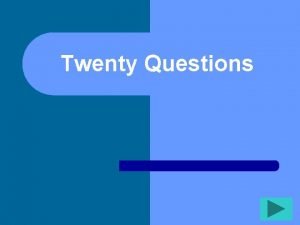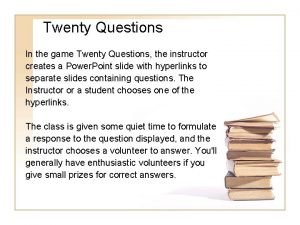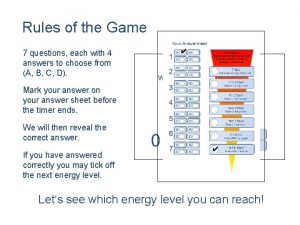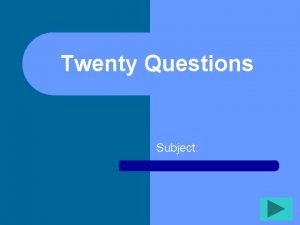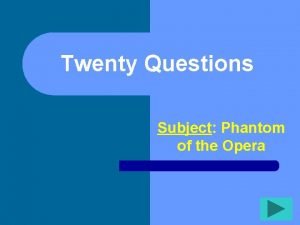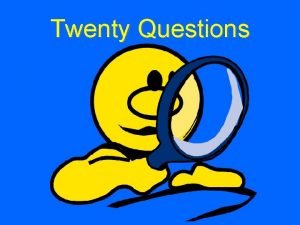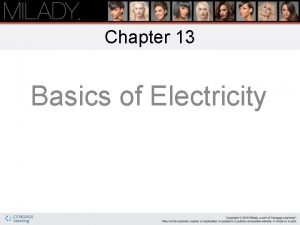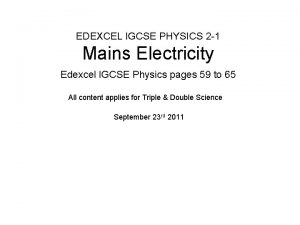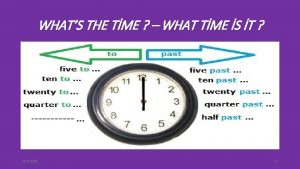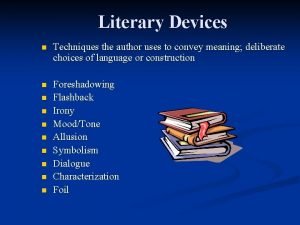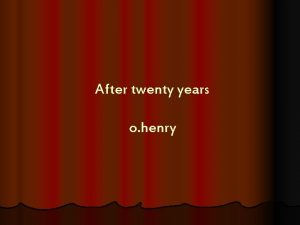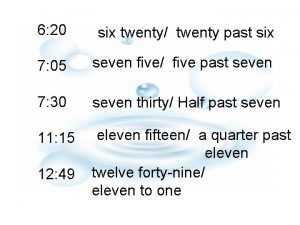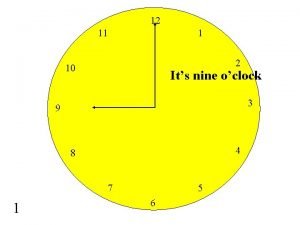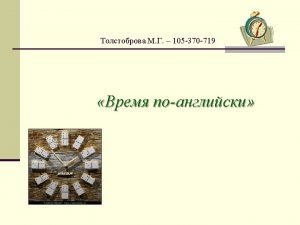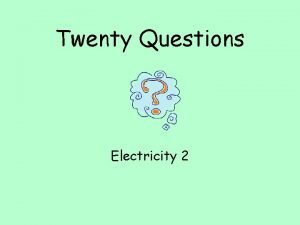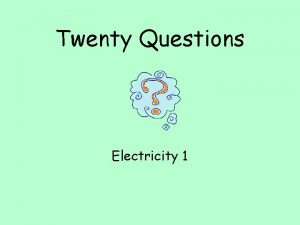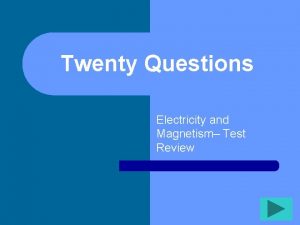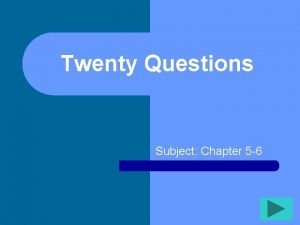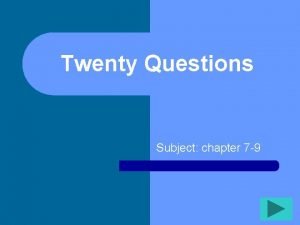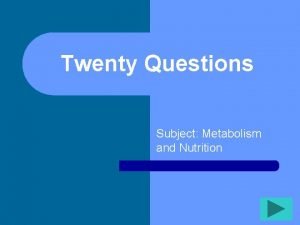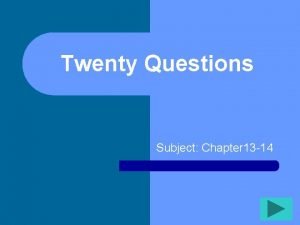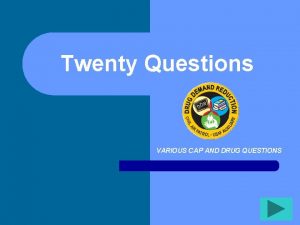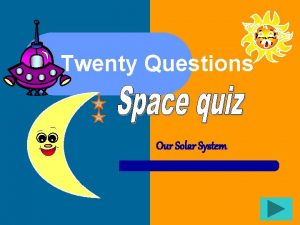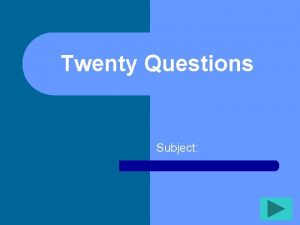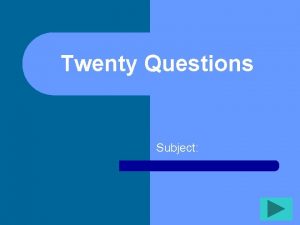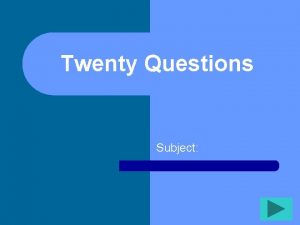Twenty Questions Electricity 1 Twenty Questions 1 2






















- Slides: 22

Twenty Questions Electricity 1

Twenty Questions 1 2 3 4 5 6 7 8 9 10 11 12 13 14 15 16 17 18 19 20

1. State the relationship for current in a Series circuit. • Current is the same at all points in a series circuit.

2. What effect does increasing the resistance of a circuit have on the current? • As resistance increases.

3. In which position is the voltmeter/ammeter? A V

4. Calculate the total resistance. 20Ω 10Ω 5Ω

5. Two identical bulbs are connected to a 9 V battery. What is the voltage across each bulb? • 9/2= 4. 5 V

6. Calculate the power dissipated in a 330Ω resistor when a 5 A current flows through it. 2 I • P= R 2 • P = (5) x 330 • P = 8. 25 k. W

7. Two identical 10Ω resistors are connected to a 9 V supply. What is the current through each resistor? • I=V/R=9/(10+10) • I = 0. 45 A

8. State the relationship for voltage in a parallel circuit. • Voltage in a parallel circuit is equal across each branch.

9. What is electrical power? • The rate at which electrical energy is converted to other forms.

10. What is the function of a variable resistor? • To allow you to vary the current in a circuit.

11. Which resistor has a greater potential difference across it? • The 7Ω resistor. 9 V 7Ω 6Ω

12 V 12. Calculate the voltage across the resistor. • Vs = V 1 + V 2 • 12 = 4 + V 2 • V 2 = 8 V 4 V

13. What is current? • The flow of electric charges around a circuit.

14. What happens to the value of a resistor when the Voltage across it is increased? • The resistance of a resistor remains constant.

15. Give a practical application of a variable resistor. • Volume control on radio • Temperature control on cooker • Brightness control on a dimmer switch

16. What is the current through the resistor? • IT = I 1 + I 2 • 4 = 3 + I 2 • I 2 = 1 A 4 A 3 A

17. What is the total resistance of a 20Ω & 30 Ω resistor in parallel?

18. Calculate the energy used by a 12 V kettle in 2 minutes if it draws 3 A from it’s supply. • E = Pt • P = IV = 3 x 12 = 36 W • E = 36(2 x 60) • E = 3. 84 k. J

19. What formula relates power, voltage and resistance? • P= 2 V /R

20. What is Voltage? • The energy given to each charge in the circuit.
 Static electricity and current electricity
Static electricity and current electricity Electricity n
Electricity n Electricity and magnetism vocabulary
Electricity and magnetism vocabulary 20 question game
20 question game Twenty question game
Twenty question game Subject questions
Subject questions Twenty questions for christmas
Twenty questions for christmas Twenty questions rules
Twenty questions rules Twenty questions
Twenty questions 20 questions game
20 questions game Aa twenty questions
Aa twenty questions Chapter 13 basics of electricity review questions
Chapter 13 basics of electricity review questions Igcse physics electricity questions and answers
Igcse physics electricity questions and answers It's twenty to nine
It's twenty to nine Twenty point programme slideshare
Twenty point programme slideshare Twenty past ten
Twenty past ten Harrison bergeron foreshadowing
Harrison bergeron foreshadowing How long is “four score and seven years”?
How long is “four score and seven years”? Consumer culture theory (cct): twenty years of research
Consumer culture theory (cct): twenty years of research O henry summary
O henry summary 20 past six
20 past six 10 12 11
10 12 11 Half past three o clock
Half past three o clock



